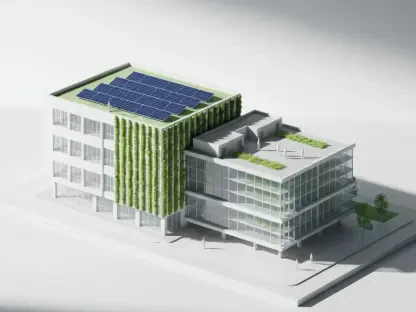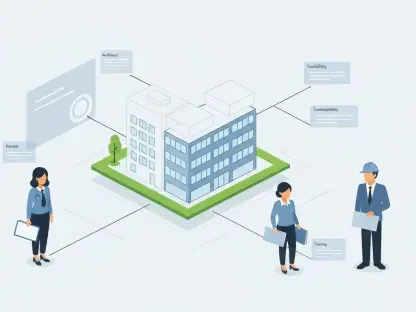I’m thrilled to sit down with Luca Calaraili, a seasoned expert in construction, design, and architecture, whose passion for innovative technology applications has reshaped how we think about building communities. Today, we’re diving into the remarkable achievements of a leading housing association in southern England, as outlined in their 2024–25 Annual Review. Our conversation with Luca will explore how customer insights drive transformative change, the impact of significant investments in housing, the push toward digital engagement, and the power of community-building initiatives. Let’s uncover the strategies and stories behind creating better homes and stronger neighborhoods.
How can customer feedback shape the priorities of a housing association, and what kind of impact did this have based on the recent review?
Customer feedback is absolutely critical in steering the direction of any housing organization. When residents speak up about what matters most—whether it’s quicker repairs or better communication—it gives a clear roadmap for improvement. In this case, the review shows how listening led to tangible results, like cutting down repair times and enhancing how complaints are handled. It’s about building trust; when people see their voices turning into action, it fosters a real sense of partnership. The focus on customer priorities transformed not just services but also how residents feel about their homes and communities.
What strategies can significantly reduce the time taken for non-emergency repairs, and how do these improvements affect residents?
Speeding up non-emergency repairs to an average of 18 days, as highlighted in the review, often comes down to streamlining processes and better resource allocation. This might mean improving scheduling systems, training staff for efficiency, or partnering with reliable contractors. The impact on residents is huge—waiting weeks for a fix can be frustrating and disruptive. When repairs happen faster, it shows residents that their needs are a priority, directly improving their day-to-day lives and satisfaction with their living environment.
Why do you think there’s been such a notable increase in digital engagement among customers, and what role does technology play in housing services?
The 20% jump in online account logins reflects how much people value convenience and control. Housing associations likely enhanced their digital platforms with user-friendly features—think easy rent payments, repair requests, or updates on services. Technology is a game-changer in this space; it empowers residents to manage their needs anytime, anywhere, while freeing up staff to focus on more complex issues. It’s a win-win, and as digital tools evolve, they’ll only become more integral to how housing services connect with communities.
When a housing association invests heavily in maintaining and improving existing homes, what are some key areas they might focus on, and how does this benefit residents?
An investment like £100.2 million into existing homes typically targets critical upgrades—things like energy efficiency improvements, modernizing kitchens or bathrooms, or addressing structural issues. These aren’t just cosmetic fixes; they directly enhance living conditions, reduce utility costs, and ensure safety. For residents, it means a better quality of life and a home that feels cared for. It’s also a long-term commitment to sustainability and comfort, which builds a deeper sense of security.
How does the completion of over 1,500 new affordable homes contribute to community development, and what factors influence where these homes are built?
Building over 1,500 new affordable homes is a massive step toward addressing housing shortages and supporting diverse communities. These homes often go up in areas with high demand or where infrastructure—like schools and transport—can support growth. The decision on location usually balances need, available land, and local partnerships. For families and individuals moving in, it’s life-changing; it offers stability, access to opportunities, and a fresh start, while also enriching the broader community fabric.
As a housing association grows in the number of homes and customers it manages, what are some challenges in maintaining service quality, and how can they be addressed?
Scaling up by 4% in managed homes and adding nearly 3,000 customers brings real challenges—stretching resources, maintaining consistent communication, and ensuring staff can handle the increased workload. It’s easy for quality to slip if growth outpaces capacity. The key is investing in systems and people—whether that’s hiring more staff, leveraging technology for efficiency, or regularly checking in with customers to catch issues early. Keeping that personal touch, even at scale, is what sustains trust and service standards.
Can you share your thoughts on the importance of resident-led initiatives, like the one at a housing complex for seniors, in fostering a sense of community?
Resident-led initiatives, like the new group at a seniors’ housing complex mentioned in the review, are incredibly powerful. When residents take the lead, it’s not just about solving problems—it’s about creating a shared identity and pride in their space. These efforts, supported by the housing team, help people feel heard and connected. It transforms a place to live into a true home, where neighbors support each other. That kind of community spirit is invaluable and often inspires others to get involved too.
What is your forecast for the future of housing associations in terms of balancing growth with customer satisfaction?
Looking ahead, I think housing associations will face increasing pressure to grow while keeping customer satisfaction front and center. The demand for affordable housing isn’t slowing down, so expansion is inevitable. But the real challenge will be maintaining that personal, responsive approach as numbers rise. I foresee a heavier reliance on technology to manage scale—think smarter digital platforms and data-driven decision-making—paired with a renewed focus on community engagement. If they can strike that balance, housing associations will not only meet needs but also build stronger, more resilient communities for the long haul.









